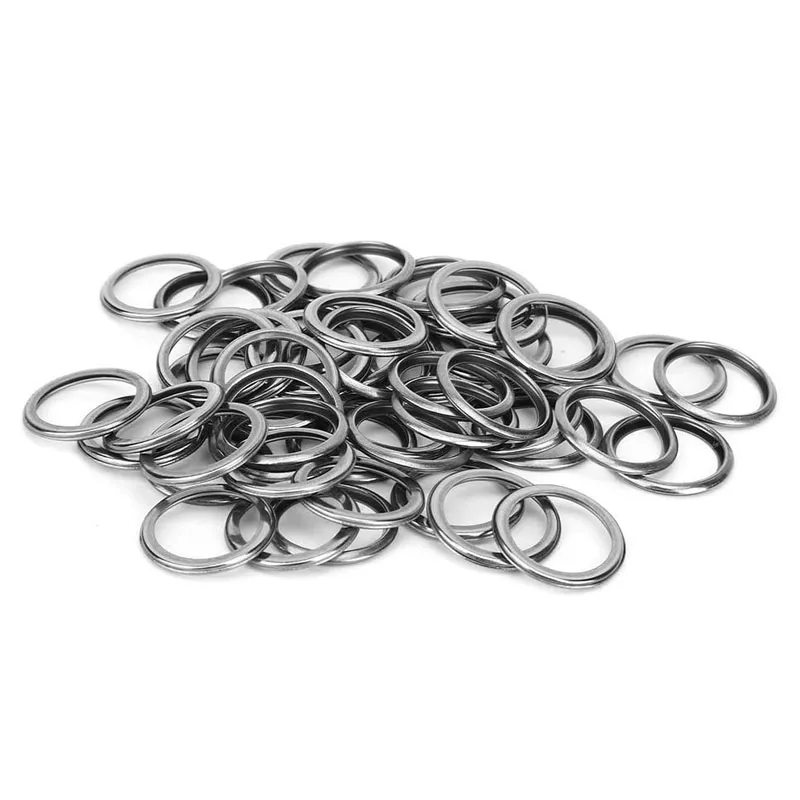305 oil pan gasket
Understanding the Importance of a 305 Oil Pan Gasket
The oil pan gasket is a crucial component in any engine, serving as a seal between the oil pan and the engine block. For those working on or maintaining a vehicle equipped with a 305 engine—commonly found in various Chevy vehicles from the mid-20th century to the early 21st century—the oil pan gasket plays a vital role in ensuring the integrity and efficiency of the engine. Understanding the significance of the oil pan gasket, its common issues, and maintenance will help ensure the longevity and performance of your engine.
What Does the Oil Pan Gasket Do?
The primary function of the oil pan gasket is to prevent oil leaks. The oil pan serves as the reservoir for the engine oil, and the gasket forms a seal that keeps oil from seeping out. Without a properly functioning gasket, oil can leak from the pan, leading to low oil levels and subsequent engine damage due to inadequate lubrication. Moreover, leaks can create messy situations that may lead to unsafe driving conditions, and they can also contribute to environmental pollution.
Signs of a Failing Oil Pan Gasket
Recognizing the symptoms of a failing oil pan gasket is key to preventing further damage. Some common signs include
1. Oil Leaks If you notice dark puddles or spots under your vehicle, it could be a sign of an oil leak stemming from a failing gasket.
2. Oil Spots on the Driveway Regularly checking your parking spot can help you identify any leaks. Oil spots can indicate a compromised gasket.
4. Burning Oil Smell If oil leaks onto hot engine parts, it can produce a burning smell, which can be dangerous.
5. Engine Noise Insufficient lubrication due to low oil levels can cause increased engine noise. Any unusual sounds may indicate a problem, including a failing oil pan gasket.
When to Replace Your Oil Pan Gasket
305 oil pan gasket

Replacing the oil pan gasket should be done before significant issues arise. Typically, this is recommended if you notice any of the symptoms mentioned above. It's also common practice during an oil change or other significant engine repairs. Regular maintenance and checks can help you stay aware of the gasket's condition and prevent costly repairs down the road.
The Replacement Process
Replacing the oil pan gasket involves several steps. First, you’ll need to gather the necessary tools, including a socket set, torque wrench, and, of course, a new gasket. Here's a brief outline of the process
1. Drain the Oil Begin by draining the oil from the pan to avoid spills.
2. Remove the Oil Pan Using a socket set, unbolt the oil pan from the engine block. This step may require some physical effort, given the pan's weight and possible corrosion.
3. Clean the Surface After removing the old gasket, clean the mating surfaces on the oil pan and engine block thoroughly to ensure a proper seal.
4. Install the New Gasket Place the new gasket on the oil pan, ensuring it's properly aligned. Then, reattach the oil pan and bolt it back into place. Follow the manufacturer's specifications for torque settings.
5. Refill the Oil Once the pan is secured, refill the engine with the appropriate type and amount of oil.
6. Test for Leaks After starting the engine, inspect the area for any signs of leakage.
Conclusion
The oil pan gasket may be a small part of the engine, but its role is crucial in ensuring that the engine runs smoothly and efficiently. For owners of vehicles with a 305 engine, understanding the importance of this component, recognizing the signs of failure, and knowing when to replace it can save you from more extensive damage and costly repairs. Regular maintenance goes a long way in ensuring the longevity of your engine and overall vehicle performance. Take care of your oil pan gasket, and it will take care of your engine.
-
Understanding the Front Main Engine Seal: Purpose, Maintenance, and Installation
News Jul.29,2025
-
Understanding O-Rings and Seal Rings: Types, Applications, and Custom Solutions
News Jul.29,2025
-
Understanding Crankshaft Oil Seals: Rear Seals, Pulley Seals, and Their Role in Engine Integrity
News Jul.29,2025
-
The Importance of Front and Rear Crankshaft Seals in Engine Performance and Oil Management
News Jul.29,2025
-
Crank Oil Seals: Functions, Types, and Cost Considerations in Engine Maintenance
News Jul.29,2025
-
A Comprehensive Guide to O-Rings and Seals: Types, Materials, and Global Applications
News Jul.29,2025
-
Mastering Diesel and Performance Engine Maintenance: A Guide to Critical Oil Gaskets
News Jul.28,2025
Products categories















